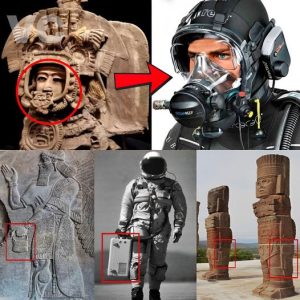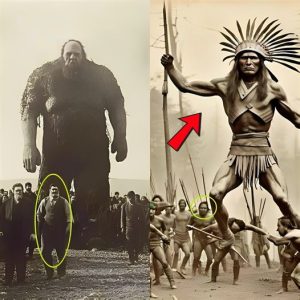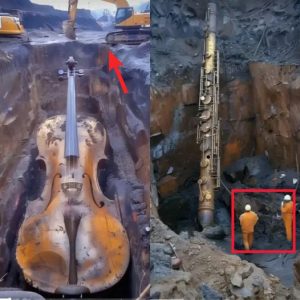Revealing ancient mysteries: the discovery of a giant horned skeleton in East Africa
In a groundbreaking archaeological revelation, scientists have unearthed a colossal horned skeleton in the arid expanses of East Africa. The astonishing find has sparked a flurry of excitement and speculation, shedding new light on the region’s prehistoric mysteries and challenging established historical narratives.

The skeletal remains, estimated to be several thousand years old, were discovered during an excavation in a remote desert region known for its rich archaeological heritage. The site, long shrouded in mystery, had previously yielded artifacts of significant historical value, but nothing of this magnitude. The excavation team, made up of international experts in archaeology and paleontology, stumbled upon the skeleton while exploring an ancient burial ground.

Measuring an incredible 12 feet in length, the skeleton’s most striking feature is its massive, curved horns. Preliminary analysis suggests the horns could have served a variety of purposes, from defense mechanisms to social signaling within its species. The skeleton’s sheer size has led researchers to speculate that this creature belonged to a previously unknown species of giant hominid or to ancient, now-extinct megafauna.

The discovery has profound implications for our understanding of human evolution and prehistoric biodiversity. If the skeleton is indeed that of a giant hominin, it could revolutionise our knowledge about human ancestry, suggesting a lineage that coexisted with early humans but remained undiscovered until now. Alternatively, if it belongs to a giant animal species, it may provide insights into the environmental conditions and ecological dynamics of ancient East Africa.
The horns present a fascinating puzzle. In many cultures, horns symbolize power, fertility and divinity. This find could indicate that ancient East African societies revered these creatures or that horns had an important cultural or spiritual role. The structure and location of the horns will be scientifically studied to understand their practical functions, such as combat, mating rituals or environmental adaptation.

The discovery of the skeleton opens up numerous avenues for future research. Detailed DNA analysis and radiocarbon dating will be conducted to determine its exact age and genetic lineage. In addition, the surrounding area will be thoroughly investigated to uncover additional remains or artifacts that may provide context to this extraordinary find.
The discovery of the giant horned skeleton in East Africa is a testament to the unexplored depths of our planet’s history. As scientists delve deeper into this enigmatic discovery, we may soon find answers to questions that have long eluded us, revealing new chapters of Earth’s ancient history and the diverse life forms that once roamed its surface. This remarkable find not only enhances our understanding of the past but also ignites our curiosity and passion to uncover the mysteries that still remain hidden beneath the sands of time.
A farmer’s loyal friend: A dog’s unwavering commitment to helping his owner grow rice inspires online community
Every year, we discover something about our history on the planet through excavations around the world. By opening such a dig, archaeologists discovered what the world may be like…
The “oldest gold in human history” was found in the Varna necropolis on the Bulgarian Black Sea coast. In 1972, an excavator working in the industrial zone discovered the remains…
In addition to mythology and folklore, remains of extremely tall people have been reported, although rarely documented. Everyone will decide for themselves whether they believe in them or not…
A sk𝚎l𝚎t𝚘n ch𝚊in𝚎𝚍 𝚊t the n𝚎ck w𝚊s 𝚞n𝚎𝚊𝚛th𝚎𝚍 𝚛𝚎c𝚎ntl𝚢, s𝚎n𝚍in𝚐 ʋ 𝚎𝚛s 𝚍𝚘wn th𝚎 s𝚙in𝚎s 𝚘𝚏 м𝚊n𝚢. This 𝚘𝚏 𝚊𝚛ch𝚊𝚎𝚘l𝚘𝚐istas…





